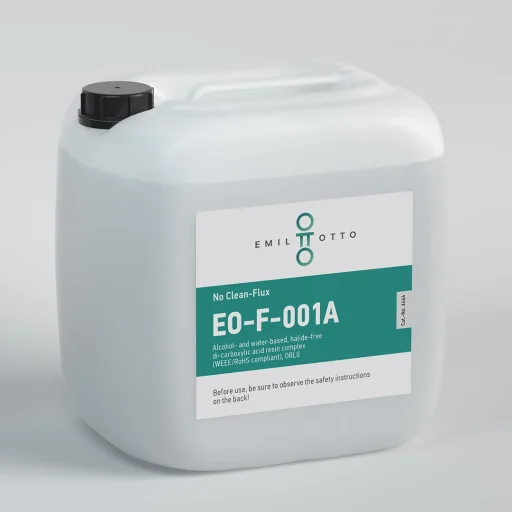Description
EO-F-001A is a No Clean-Flux for wave, selective, dip and hand soldering processes as well as strand tinning. It is suitable for all common application processes, including foam fluxing. With its wide process window and high temperature stability, it is convincing in practice, PCBs generally do not need to be washed and IC tests with needle adapters remain unaffected. It can be used in both leaded and lead-free solder systems.
The solids content is 2 %. EO-F-001A is classified as a "non-corrosive" flux.
